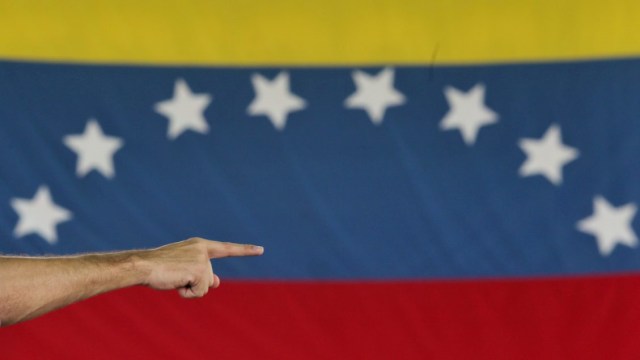
For years, the Venezuelan opposition has been betting on breaking the regime under the pressure of two main forces. We need to update the approach according to the web of factors that are already in place.
By Caracas Chronicles – Diego Bautista Urbaneja
Jul 22, 2021
In the minds of those who are driving forward a political change in the country, the pincer thesis has been at the front. It consists of claiming that a change of regime in Venezuela has to be the result of pressure made by a pincer, where both of its arms are represented by the international community and internal pressure.
The thesis, as well as the explanation of what the purpose of each of these arms is, reached a commonplace status. International pressure is made up of a series of personal, economic, diplomatic, and legal sanctions. They are to come from democratic countries all over the world, especially the most developed ones; international organizations, such as the UN Human Rights Commission; international personalities who are relevant in public opinion; countries in the region, especially those most affected by the diaspora. When it comes to the economic sanctions we have two paths: some claim that they harm Venezuelans more than they do the regime, while others assert that if the pincer strategy is to be held, then these sanctions constitute an inevitable price to pay. Especially when, as it so happens in European countries, these personal sanctions, which in truth could be quite effective, are carried out with a rather lukewarm approach. This half-heartedness is to be compensated, supposedly, by economic sanctions applied by the country holding the necessary tools; the United States.
Internal pressure would consist of an organized wave of protests and manifestations coordinated by a united political organization, guided by a clear strategic vision. If duly combined with external pressure, internal pressure with these characteristics could result in maximum force by the pincer, forcing the regime to look for a way to hand over the power.
The pincer model implies an end result without which the thesis won’t work. It consists of knowing how strong the pressure must be for it to cause an internal fracture of the regime’s power structure. It would lead an important group to believe that the best thing the governing group could do is prepare its exit. An internal struggle between the “hard” and the more “sensible” factions would ensue; a fight with an uncertain end. But, you start off with the premise that without said fracture, no matter how much pressure is applied, the desired result of a political change wouldn’t be achieved.
The pincer thesis has led the way in the political struggle these few years. If we look at the facts, there really has been a lot of pressure. Both from the inside and the outside.
Probably not as much, as coordinated, or as mindful of what happens as one would’ve ideally wanted. But, it’s a good idea to warn against falling into the temptation of what Ramón Piñango calls “the media utopia”: assuming that to solve a problem you have the tools and abilities that, if you had had them from the beginning, you wouldn’t have the problem in the first place.
What has failed is the desired effect: there has been no fracture. It has been provoked in several ways. They bet on a fracture in the military, but an inadequate understanding of the material and psychological mechanisms which kept the high-ranking officers close to the regime stopped the appropriate “incentive structure” that would have resulted in said fracture.
…
Read More: Caracas Chronicles – From the pincer movement to the mesh strategy
…

